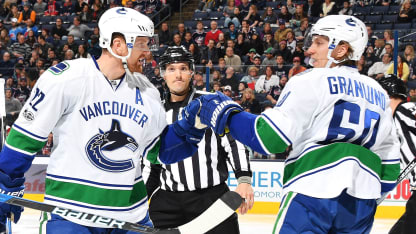It may not be a particularly advanced statistic, but the Vancouver Canucks need to get more shots on goal and allow fewer.
The Canucks' 2,273 shots on goal last season were last in the NHL. Their 2,605 shots-against were the sixth-most, according to Hockey-Reference.com.
In 2015-16, Vancouver was 28th in the League in shots (2,311), and it allowed the second-most (2,668).
On an individual basis, 144 NHL players had more than 160 shots on goal last season, and only one played for the Canucks, forward Daniel Sedin (216). It was Sedin's lowest shot total in a full NHL season since 2005-06, when he had 204.
Rookie forward Brock Boeser may help. Over the past two seasons, Boeser had 246 shots on goal in 74 games for the University of North Dakota, and he had 25 in nine games for the Canucks in 2016-17.

